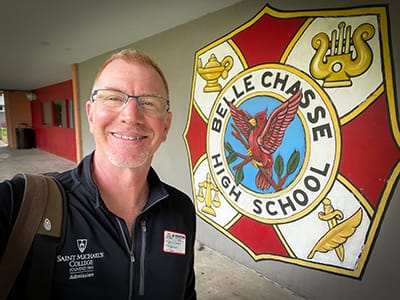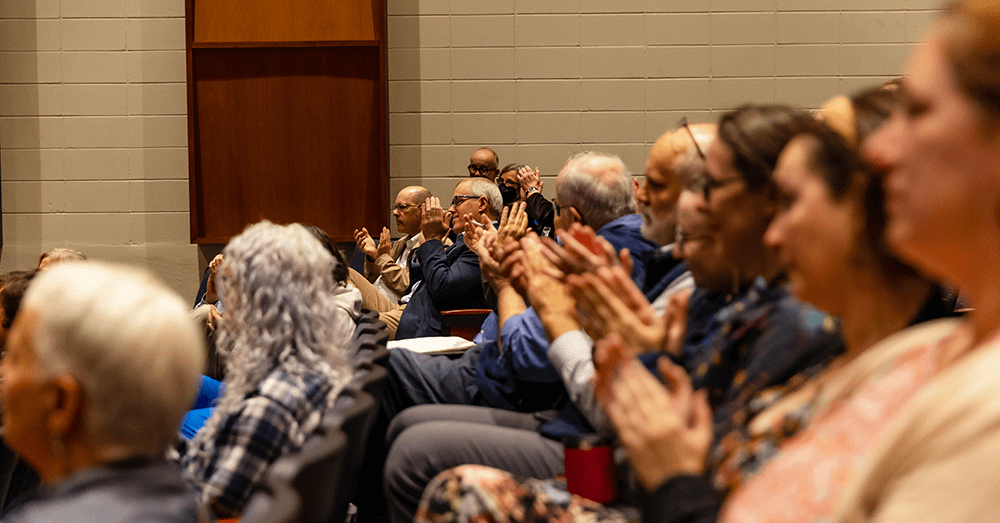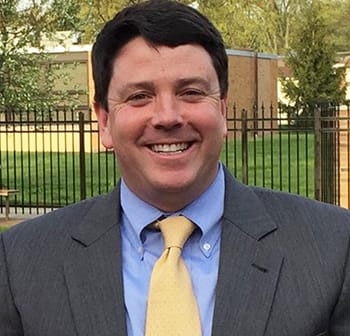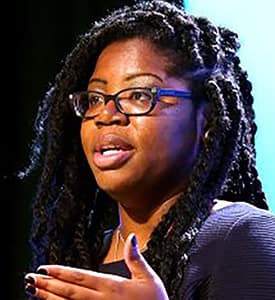New MAT program meets demands
New Saint Michael's MAT program meets broad demands
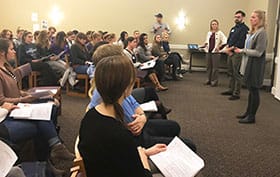
The photo above show scenes from education classes and events at Saint Michael’s College. Below in descending order are images of Claudine Bedell (left) and Amy Saks-Pavese (right) from the education faculty, and other scenes from graduate classes and department events.
A new Master of Arts in Teaching (MAT) program at Saint Michael’s College, more practice-based than the traditional Master of Education (MEd), answers growing demands from potential undergraduates, recent college graduates, and career-changers to earn teacher licensure faster and more affordably.
Claudine Bedell, director of Graduate Education, and Amy Saks-Pavese, MAT coordinator, say this new program is also practical in optimizing existing and new endorsement options in the College’s Education Department to meet the most urgent needs in schools across Vermont and nationally: for special educators, for English language learner teachers, for math and science teachers, and now, through a new St. Mike’s endorsement offering, for early childhood educators.
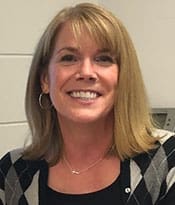 The new MAT program takes the place of the old licensure-only option. As of late April, 22 students were transferring from the Licensure Program into the new MAT, “and we have interviewed 32 really wonderful new candidates,” said Bedell. One key advantage of students earning both licensure and a master’s during their year of teaching preparation is that teachers start higher on the pay scale with a master’s degree.
The new MAT program takes the place of the old licensure-only option. As of late April, 22 students were transferring from the Licensure Program into the new MAT, “and we have interviewed 32 really wonderful new candidates,” said Bedell. One key advantage of students earning both licensure and a master’s during their year of teaching preparation is that teachers start higher on the pay scale with a master’s degree.
Saks-Pavese pointed to features of the new MAT program that she believes distinguishes Saint Michael’s College: Most exciting for her is a culminating capstone seminar called Personalized Inquiry: Finding your Why? “Since we have such a strong reputation in the field in our licensure programs already, particularly throughout Vermont,” Saks-Pavese said, “we wanted to make sure this program, while accelerated, maintained that quality in light of our Saint Michael’s mission and Department mission. So the capstone seminar is really an opportunity for students to launch their career as change agents and innovators in the field, in keeping with those missions.”
MAT students will have a placement in a school setting for every semester that they are in the program, and a student-teaching placement for a full year rather than just a semester. Additionally, the program will include a “cohort model” – groups of students working and studying together collaboratively on campus and at field sites for mutual support. Additionally, students will have the benefits of a workshop series examining cutting edge issues in social-emotional learning “so our students will be well aware of what’s happening in the schools and will be ready to hit the ground running,” Saks-Pavese said. “It’s an accelerated, but rigorous program — not a rushed program.”
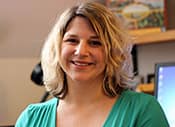
Bedell said that the steering committee who created the new program “worked to wrap around our students all the things we think are necessary, important and visionary.” The MAT faculty will be “a mix of full-time faculty and expert instructors from the field,”’ Bedell said.
An appealing aspect of the new program for present Saint Michael’s undergraduates, both in terms of affordability and manageable workload, is that in recent years the College approved its undergraduates taking up to three graduate courses, with the credits applicable toward the MAT program if they choose to enter it. “This has made it even more accessible for undergraduate students to do the MAT in one year.”
The one-year program runs summer, fall and spring and makes it easily possible to finish in a year for career-changing applicants as well. Bedell and Saks-Pavese said potential students from the outside the community repeatedly have told them of their desire for such a program that requires no prior coursework in education, while offering greater affordability in these economically challenging times. The MAT offers licensure tracks in elementary, middle, secondary, art and special education.
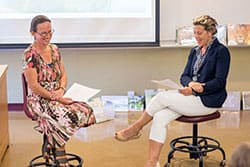
“We’re hearing from applicants that they are happily surprised by how affordable and competitive we are,” Saks Pavese said. “Another advantage, though it may seem a small matter but still figures large for students, is that we have no external fees. Parking is free and easily accessible, for example.”
While St. Mike’s undergraduate education majors earn licensure by completing their program, the MAT would be a good fit for any undergraduate who majored in something other than education, but then discovered a passion for teaching. A strong liberal arts background will be a good foundation to launch any candidate into the MAT. Also, it is right for a person who might have worked several years or even decades in another career and feels inspired to teach later in life.
A related new offering in the St. Mike’s Education Department is an undergraduate major called “Education Studies,” which is not a direct licensure track like a conventional education major, but allows students to explore their possible interest in teaching early-on, presenting the option of entering the MAT program after graduation. Bedell said, “Our students now have the option to explore nontraditional educational settings like nature centers and museums and then decide later if they want to become licensed teachers through the MAT program.”
Also new, the Early Childhood Education endorsement can be added to the initial elementary education endorsement and enables graduates to teach from age 3 through grade 3, Bedell said. “It opens up more career opportunities and there is a national need.” She noted that this new offering also was a response to requests from current and prospective students. The coordinator of that specialized curriculum, Jenny Stearns, “literally went to every preschool in the area to look for placements for our students. Jenny has been working in the field of early childhood education her entire career and is an expert.”
Bedell said the M.Ed. degree program, which will continue to be offered, is designed for inservice teachers or administrators who want to expand their professional knowledge on a more research-based theoretical and academic plane, since they already have multiple years of practical experience. It can also be a stepping stone toward an education doctorate for school leaders or other aspiring teacher leaders.
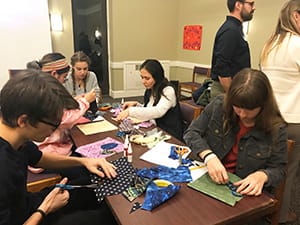
The design team is excited by the students they have interviewed thus far. Their backgrounds have been varied and their passion is evident: “We have some people who are working tangentially in the field of education,” said Saks Pavese, “…a farm-to-school coordinator in a district, or someone who was in AmeriCorps and who was attracted to our program because of the social justice angle in St. Michael’s mission.”
“Special education has been our really big draw,” Saks Pavese said. “Many people are coming here to be special educators or to add special education licensure to a license they already have.” Bedell added, “We’re very focused on our students being well-prepared to become change agents who are highly prepared to teach and be transformative in their schools.”

